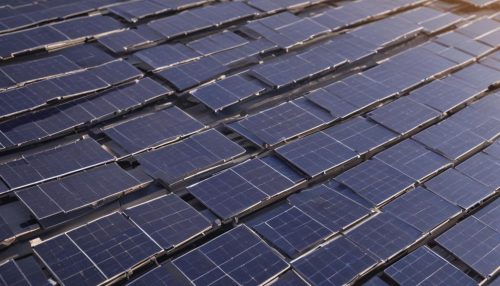What You Need to Know About Solar Panels for Home: Costs, Savings, and Setup
Olivia Morgan August 15, 2025
Explore how solar panels for home use can help reduce energy bills, increase property value, and contribute to a sustainable future. This comprehensive guide answers common questions about solar panels installation and costs savings, and long-term benefits for homeowners.
Why Solar Panels for Home Costs Savings Are Gaining Popularity
Interest in solar panels for cost savings for home has surged due to growing concerns over rising utility costs and environmental sustainability. Many homeowners now recognize that installing a residential solar system offers a way to generate clean, renewable energy and take control of their long-term electricity expenses. This shift in perspective is transforming neighborhoods across the country as more roofs are outfitted with photovoltaic panels designed to harness the sun’s abundant energy.
One factor driving this trend is the variety of incentives and rebates available for installing home solar power systems. Local and federal programs aim to make solar technology accessible and affordable for more households, allowing families to offset a significant portion of the initial investment. Coupled with steadily decreasing equipment costs, these financial incentives encourage even first-time homeowners to consider going solar (Source: U.S. Department of Energy).
Another appealing aspect is the long-term value proposition. Solar panels for home use typically require little maintenance and can last 25 years or more. This means that, after recuperating the initial expenditure, homeowners may enjoy years of virtually free electricity. Besides the financial benefits, the positive environmental impact—such as reduced carbon emissions—adds another layer of motivation for eco-conscious individuals.
Understanding the Real Cost of Using Solar Panels
When evaluating solar panels for home installation, understanding the costs involved is crucial. The total price can vary depending on location, energy usage, and specific system requirements, but the average U.S. household might expect to pay between $15,000 and $25,000 before incentives (Source: National Renewable Energy Laboratory). Thanks to tax credits and rebates, the out-of-pocket expense can be substantially lower. These price ranges include not just the panels themselves but also inverters, electrical work, permitting fees, and labor.
Energy needs will directly influence system size and overall investment. Homeowners should review recent power bills or consider an energy audit when planning their solar project. This ensures the recommended setup is neither oversized nor undersized, optimizing both upfront investment and future savings. Additionally, innovations in solar financing—such as solar loans and leases—let homeowners install panels with limited or no money down, further improving affordability (Source: U.S. Department of Energy, 2022).
The installation process might involve extra costs for roof repairs, electrical upgrades, or tree removal in some cases. It’s wise to consult several licensed solar companies for estimates before making a decision. Understanding warranty options on equipment and installation is also essential, as these can influence both short-term cost and long-term satisfaction with the system (Source: Consumer Reports).
How Solar Panels Actually Work in Home Costs Savings
Solar panels for home use are engineered to convert sunlight directly into electricity through photovoltaic cells. When sunlight hits these cells, they create an electric current that is routed to an inverter. The inverter transforms the current into a form that can safely power household appliances and lighting. Any surplus energy generated can be stored in batteries or fed back into the local grid, depending on the system’s configuration (Source: Energy.gov).
Net metering is a key feature that many utilities offer, allowing homeowners to receive credits for excess electricity their system feeds into the grid. This means the utility meter can actually run backward when the panels produce more than the home consumes, translating into further savings or even a zero-dollar electric bill in some months. Net metering policies vary by region, so it’s important to verify details with your local power provider.
Advancements in microinverters and smart monitoring systems enable real-time insights into solar production and energy consumption, which can be accessed via smartphone apps or web dashboards. As technology improves, solar panels are becoming more efficient and versatile, making them a sound solution for diverse climates—from sunnier southern states to cloudier northern regions.
Potential Costs Savings and Payback Periods Explained
The decision to install solar panels for cost savings for home use often hinges on the promise of financial savings. Average households typically see substantial reductions in their electricity bills. According to data from the Solar Energy Industries Association, some systems can cut energy costs by 70% or more, depending on solar resource availability and system configuration (Source: SEIA).
Payback periods—the time it takes for the system’s savings to catch up with the initial outlay—generally range from 6 to 12 years. Factors influencing payback include local electricity rates, system cost, sun exposure, and incentive eligibility. States with higher utility rates or generous solar programs tend to offer the shortest payback periods, creating particularly attractive conditions for renewable investment (Source: National Renewable Energy Laboratory).
It’s worth noting that solar panels continue producing energy long after the payback period ends. Over the system’s 25-30 year expected life, homeowners can accumulate tens of thousands of dollars in net savings, even after accounting for maintenance and eventual component replacement (Source: Lawrence Berkeley National Laboratory).
How Solar Panels Affect Home Value and Sale
Aside from costs savings, solar panels for home use are often linked to an increase in property value. Studies by respected organizations like the Department of Energy’s Berkeley Lab (Source: Berkeley Lab, DOE) indicate that homes equipped with solar energy systems sell for a premium compared to non-solar homes. This added value can offset a portion of the investment and appeal to eco-minded buyers.
Market studies suggest buyers are willing to pay extra for a home with a guaranteed source of low-cost, renewable energy. Additionally, selling a solar home may be quicker since sustainability features are increasingly in demand. Prospective buyers often view solar panels not only for costs savings but also as a sign of modern home upgrades.
It’s important to understand how system ownership structure—whether owned outright, leased, or under a power purchase agreement—can influence resale negotiations. Generally, homes with fully owned panels command the highest market premiums. For leased or third-party systems, buyers and sellers should document transfer procedures clearly to ensure smooth handovers at closing.
What to Expect During Home Solar Installation
The home solar installation process typically begins with a thorough site assessment, including analysis of roof condition, structural integrity, and sun exposure throughout the year. Installers use this information to design a system tailored to the unique needs and layout of the property. Once permits are obtained, the actual panel mounting, wiring, and interconnection can often be completed within a few days, depending on system size and complexity.
Throughout installation, reputable contractors will ensure compliance with electrical codes and safety standards. Inspections from local authorities are required before a newly installed system can legally be switched on. The installer should also walk homeowners through basic maintenance tasks and system monitoring tools, so that care and troubleshooting over the years become second nature.
Most modern solar panels are rated to withstand harsh weather conditions, from snow and ice to strong winds. Warranties average 20-25 years for the panels themselves and about 10 years for inverters and ancillary equipment. Regular maintenance usually involves occasional cleaning and monitoring output for performance drops, keeping things running efficiently for years to come.
References
1. U.S. Department of Energy. (2023). Homeowner’s Guide to Going Solar. Retrieved from https://www.energy.gov/eere/solar/homeowners-guide-going-solar
2. National Renewable Energy Laboratory. (2022). Solar Photovoltaic System Cost Benchmark. Retrieved from https://www.nrel.gov/docs/fy22osti/83871.pdf
3. Lawrence Berkeley National Laboratory. (2021). Tracking the Sun. Retrieved from https://emp.lbl.gov/tracking-the-sun
4. Solar Energy Industries Association. (2022). Solar Market Insight Report. Retrieved from https://www.seia.org/research-resources/solar-market-insight-report-2022-q4
5. Consumer Reports. (2022). Solar Panel Buying Guide. Retrieved from https://www.consumerreports.org/solar-panels/buying-guide/
6. Berkeley Lab, Department of Energy. (2021). Selling Into the Sun: Price Premium Analysis. Retrieved from https://emp.lbl.gov/publications/selling-sun-price-premium-analysis





